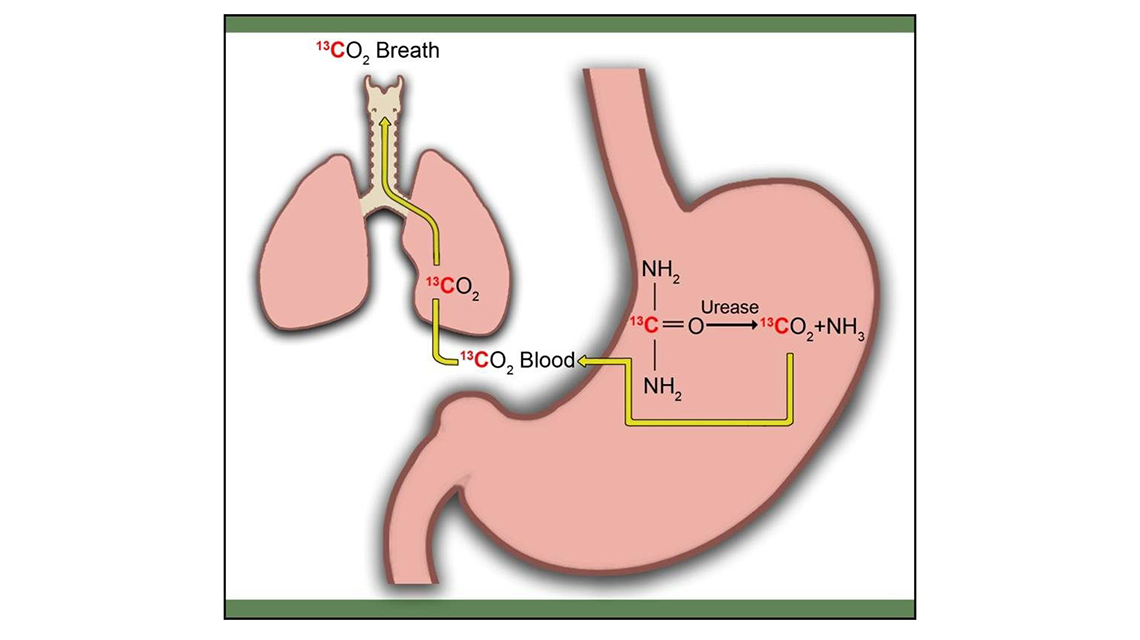Helicobacter pylori infection is a very common bacterial infection with a prevalence of around 80-90% among adults in low and middle-income countries and up to 40% in high-income countries. It is associated with gastritis in almost all cases and can lead to peptic ulcers and increases in the risk of stomach cancer. Transmission occurs in the family setting with children often catching the infection in early childhood and carry it with them for the rest of their lives.
Studies have shown that high H. pylori prevalence is associated with a variety of risk factors including low socio-economic status, low education level, poor sanitation and rural residence. Most individuals are asymptomatic, meaning that they show no obvious symptoms, but there is evidence that gastric acid output is nevertheless reduced, which affects the solubility of essential micronutrients and limits their absorption. This is significant because many food fortification programmes use iron and zinc compounds that are soluble in diluted (gastric) acid, but not in water. H. pylori infection presents an additional burden to vulnerable population groups that are often already suffering from other widespread infections and malnutrition.
Since 2011 the IAEA has supported a coordinated research project to evaluate the effect of H. pylori infection on gastric acid secretion and on iron and zinc absorption from different fortification compounds in asymptomatic individuals in developing countries.
Researchers focused on specific objectives including:
- Generating new data on the link between H. pylori infection and iron and zinc absorption from fortification compounds in asymptomatic individuals.
- Generating new data on the protective role of maternal breastfeeding on morbidity and H. pylori infection.
- Generating new data on the role of H. pylori gastric colonization in hormonal modulation of food intake and its consequences on nutritional status.
Prior to this CRP, there was insufficient data on how H. pylori infection impacts nutrient uptake and utilization, especially the absorption of micronutrients such as iron and zinc. The CRP provided significant data to that extent, enabling a clearer understanding of the various correlations between the infection, nutritional status and appetite regulation.
The 13C-Urea Breath Test was used for the diagnosis of H. pylori infection, and other stable isotope techniques were used to provide information on absorption of iron and zinc from compounds with different physical and chemical properties.
Results from the CRP were not conclusive on whether H. pylori infection affects iron and zinc absorption from fortified foods. Results from Chile did show that children infected with H. pylori were too short for their age. There was no evidence that breastfeeding patterns influenced H. pylori infection in children. The consumption of complementary foods fortified with iron protected children against H. pylori infection even if their mothers were infected. In Cuba, anaemia, iron deficiency and H. pylori were all highly prevalent among women, however, there was no correlation between these parameters. In Tanzania there were no associations between anaemia and anthropometric indicators and H. pylori infection.
In Argentina a link was demonstrated between H. pylori infection and hormonal secretion related to appetite regulation, while researchers in India demonstrated an increase in iron absorption and iron stores following treatment for H. pylori with an antibiotic.
The CRP results suggest that treatment of H. pylori with antibiotics can improve micronutrient absorption and storage, especially of iron. The results also confirm that the effect of H. pylori infection on iron and zinc absorption is not uniform, possibly related to the particular H. pylori strain and the location of the infection.
Results further suggest that H. pylori infection may limit the efficacy of any oral iron supplementation due to modified gastric secretion. New data to that effect on H. pylori infection, gastric acid secretion and iron status in children and women has been generated across Africa, Asia and Latin America.
The CRP has enabled capacity building, including training at Master’s and PhD level, and has functioned as a platform for north-south information exchange. Results also suggest that programme planners need to consider the potential effects of H. pylori infection when designing supplementation and food fortification interventions to address anaemia among children and women of reproductive age. Lastly the CRP confirmed that children who are fed with foods and liquids alongside breastmilk below six months of age tend to gain more weight in the form of body fat, a situation that can potentially increase their risk of developing diseases later in life.
Results have been published in several peer-reviewed papers which have the potential to inform policy and practice.
Researchers from Argentina, Bangladesh, Chile, Cuba, India, Morocco, United Republic of Tanzania and the United Kingdom participated in the CRP, which was coordinated by the IAEA Division of Human Health.



